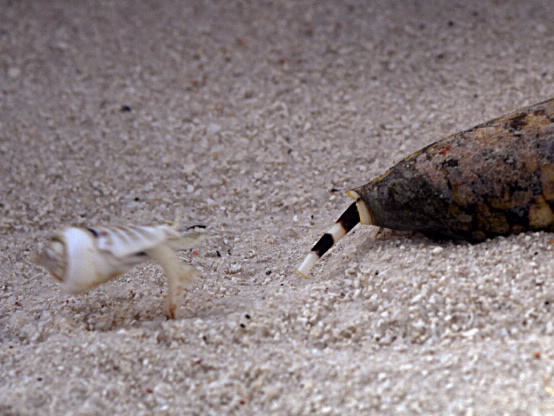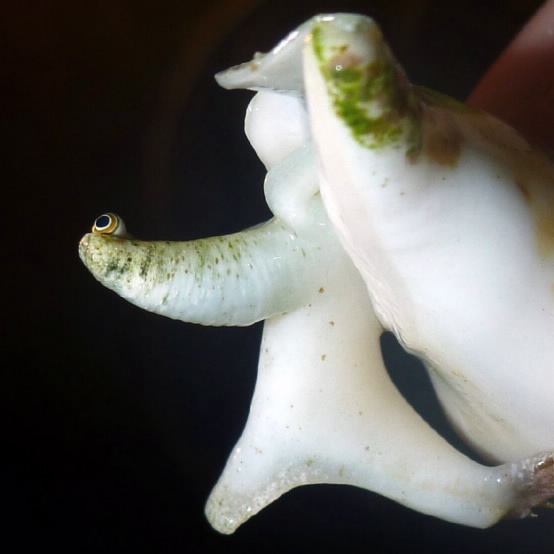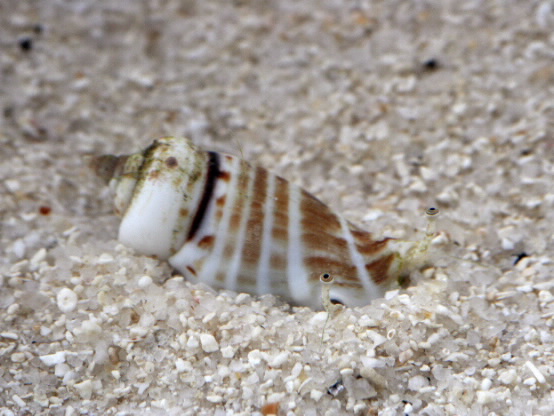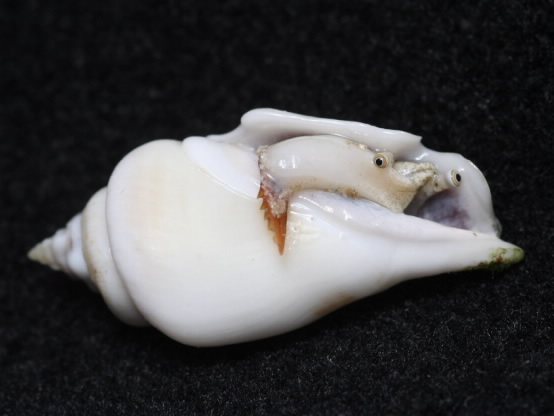Media Releases
Jumping snails left grounded in future oceans
First published January 9, 2014

Sea snails that leap to escape their predators may soon lose their extraordinary jumping ability because of rising human carbon dioxide emissions, a team of international scientists has discovered.
Lead author of the study published today, Dr Sue-Ann Watson from the ARC Centre of Excellence for Coral Reef Studies (Coral CoE) and James Cook University, observed an unusual feature of the conch snail.
The snail uses a strong foot to leap away from approaching predators, either stops jumping, or takes longer to jump, when exposed to the levels of carbon dioxide projected for the end of this century.
Dr Watson said increased carbon dioxide and ocean acidification levels disrupt a particular neurotransmitter receptor in the snail’s nervous system, delaying vital decision-making on escape. This leaves the snail more vulnerable to the poisonous dart of its slow-moving nemesis, the marbled cone shell.
Dr Watson said the effects may be quite profound.
“Altered behaviours between predators and prey have the potential to disrupt ocean food webs,” Dr Watson said.
“While this study shows that disrupted decision-making with elevated carbon dioxide levels can occur in marine invertebrates, scientists have also observed similar effects before, in fish.”

Co-author Professor Göran Nilsson, from the University of Oslo, said: “this neurotransmitter receptor is common in many animals and evolved quite early in the animal kingdom. So what this study suggests is that human carbon dioxide emissions directly alter the behaviour of many marine animals, including much of the seafood that is part of the human diet.”
Professor Philip Munday, from the Coral CoE, said past studies on the effects of ocean acidification on animals mostly focused on what would happen to the shells of marine snails and other calcifying animals – how could shells be built and maintained in a more acidic environment?
This study shows that they actually face the dual threat of both weaker shells and impaired behaviour.
Professor Munday says it was critical to study and understand more about the extent of these behavioural disturbances.
“The big question now is whether sea creatures can adapt fast enough to keep up with the rapid pace of rising carbon dioxide levels and ocean acidification,” he said.

The article Marine mollusc predator-escape behaviour altered by near-future carbon dioxide levels is authored by Sue-Ann Watson, Sjannie Lefevre, Mark I. McCormick, Paolo Domenici, Göran E. Nilsson and Philip L. Munday and appears in Proceedings of the Royal Society B: Biological Sciences.
Further images and video as well as the paper, are available on request.
Contacts:
Dr Sue-Ann Watson, Coral CoE and James Cook University, +61 (0)7 4781 5672, sueann.watson@jcu.edu.au
Professor Philip Munday, Coral CoE and James Cook University, +61 (0)7 4781 5341, philip.munday@jcu.edu.au
Jennifer Lappin, Coral CoE, +61 (0)7 4781 4222, jennifer.lappin@jcu.edu.au

JCU Media contact: Caroline Kaurila (07) 4781 4586 or 0437 028 175